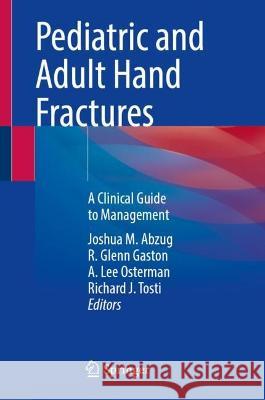Pediatric and Adult Hand Fractures: A Clinical Guide to Management » książka
topmenu
Pediatric and Adult Hand Fractures: A Clinical Guide to Management
ISBN-13: 9783031320712 / Angielski
Pediatric and Adult Hand Fractures: A Clinical Guide to Management
ISBN-13: 9783031320712 / Angielski
cena 563,56
(netto: 536,72 VAT: 5%)
Najniższa cena z 30 dni: 539,74
(netto: 536,72 VAT: 5%)
Najniższa cena z 30 dni: 539,74
Termin realizacji zamówienia:
ok. 22 dni roboczych
Dostawa w 2026 r.
ok. 22 dni roboczych
Dostawa w 2026 r.
Darmowa dostawa!
Kategorie BISAC:
Wydawca:
Springer
Język:
Angielski
ISBN-13:
9783031320712











